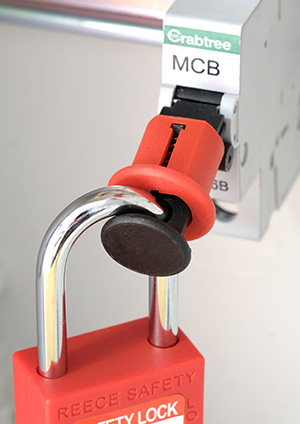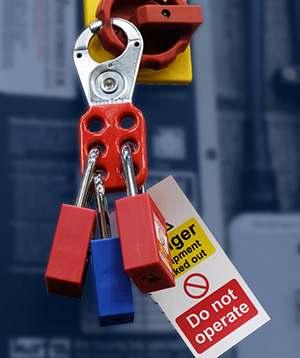Lockout Tagout is a safety procedure implemented in workplaces which use machinery. The series of steps help to make sure that potentially dangerous machinery is properly shut off and will not spontaneously restart, which puts lives at risk. Lockout Tagout is used to ensure that workers are kept safe when a machine is no longer being operated; it is especially useful for when maintenance and repair work are being carried out to ensure re-energisation of a machine does not occur, causing potential harm to anyone in close proximity.
Lockout Tagout is used to ensure that workers are kept safe when a machine is no longer being operated; it is especially useful for when maintenance and repair work are being carried out to ensure re-energisation of a machine does not occur, causing potential harm to anyone in close proximity.
The lockout tagout procedure particularly applies within any workplace with industrial equipment such as electrical machinery and should always be utilised alongside any other workplace safety regulations. The correct personal protective equipment (PPE) equipment should be worn for the lockout tagout process and the eight specific stages of the procedure should be followed, these stages are:
1. Detail procedures for equipment
2. Shut down the equipment properly
3. Equipment isolation
4. Apply lockout devices
5. Energy control
6. Verify the lockout (tryout)
7. Conduct required work
8. Reactivate
The Occupational Safety and Health Administration (OSHA) requires a formal lockout/tagout programme to be in place where industrial machinery is used, to ensure that employees are working in a safe environment. An effective lockout tagout routine should take place every time machinery requires maintenance or cleaning and has since developed into lockout tagout tryout (LOTOTO) with emphasis on trying to restart the equipment; this tryout stage checks that the lockout tagout procedure has been successful.
 How can it be safely implemented in the workplace?
How can it be safely implemented in the workplace?
Many workplaces can be resistant to change, which can be the biggest obstacle to overcome when implementing new safety policies. To minimise any agitation towards new procedures and changes, consider the three stages of culture change below and how they help to implement new procedures such as an effective lockout tagout programme in the workplace.
1. Leadership support
The company leadership team must be invested in new changes in the workplace – particularly safety implementations, as these can affect workers directly – or any initiative will fail. Leadership should focus on positively reinforcing the reasons why a procedure such as lockout tagout is needed whilst minimising negativity around the change. Ensure your employees are fully prepared for the changes coming into place.
2. Educate staff
Unless staff are aware first-hand of the dangers that can come from not following safety procedures diligently, it can be more difficult for workers to understand the need for detailed safety processes. Issues that can occur from improper or lack of training for procedures such as lockout tagout include system failure and personal harm, from minor injuries to death.
3. Focus on training and consistency
By being consistent with staff, the procedure will become a part of their everyday work routine, whilst ensuring they are keeping themselves and other workers as safe as possible. Be sure that each new worker is trained properly, along with regular refresher training and consistent spot checks on machinery and staff. The workplace should also be provided with suitable Lockout Tagout equipment from Reece Safety. Upgrading your entire electrical safety programme in the workplace will make your business a safer and more positive environment.


